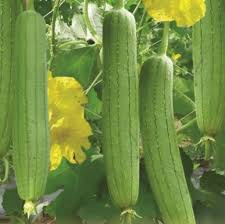BLOG
The best time to harvest loofah
The Best Time to Harvest Loofah
Loofah, a versatile and useful plant, is often grown for its fibrous fruit which, when dried, can be used as a natural sponge. Understanding the optimal time to harvest loofah is crucial for ensuring the highest quality product. Here’s a comprehensive guide to help you determine the best time for harvesting loofah.
Understanding Loofah Growth Stages
Loofah is a tropical plant known for its long, cylindrical fruit. The plant typically has two main growth stages that you need to be aware of:

-
Vegetative Growth: This phase involves the development of leaves and vines. The plant focuses on establishing itself and spreading out.
-
Fruit Development: After flowering, loofah fruits begin to grow. Initially, they are green and soft, but they need time to mature and dry out.
-
Signs of Ripeness: The ideal time to harvest loofah is when the fruit has reached its full maturity. Here are key indicators to look for:
-
Color Changes: Mature loofah fruits turn from green to a yellowish-brown or tan color. The color change is a sign that the fruit has developed its fibrous texture.
Skin Texture: When ripe, the loofah skin becomes hard and rough. Pressing on the fruit, you should feel a firm, but not overly hard texture.
-
Dryness: To check if the loofah is dry enough, gently shake the fruit. You should hear the seeds rattling inside if it’s fully matured and dried.
Timing for Harvest
Loofah typically requires a long growing season. In most climates, this means waiting until the end of the growing season, usually late summer to early fall. Here’s a more detailed timeline:
-
Early Indicators: Start monitoring your loofah fruits about two months after the flowering stage. This is when you can begin checking for color changes and texture.
-
Final Harvest: Aim to harvest loofah before the first frost if you live in a temperate region. Frost can damage the fruit and affect its quality. In tropical climates, harvest before the fruit becomes overly dry and starts to split.
-
Harvesting Technique: Carefully cut the loofah from the vine using a sharp knife or pruners. Handle the fruit gently to avoid damaging it. After harvesting, place the loofah in a dry, well-ventilated area to allow any remaining moisture to evaporate. This helps prevent mold and ensures a clean, fibrous texture.
Post-Harvest Care
Once the loofah is fully dried, you can peel away the outer skin to reveal the fibrous interior. Clean the fibers to remove any remaining seeds or debris. This cleaned loofah can be used for various purposes, from exfoliating sponges to natural scrubbing brushes.
Some Product: winvnint.com
Alibaba: https://winvnint.trustpass.alibaba.com/
 Tel: (+84) 932 118 447
Tel: (+84) 932 118 447  Email: info@winvnint.com
Email: info@winvnint.com 










